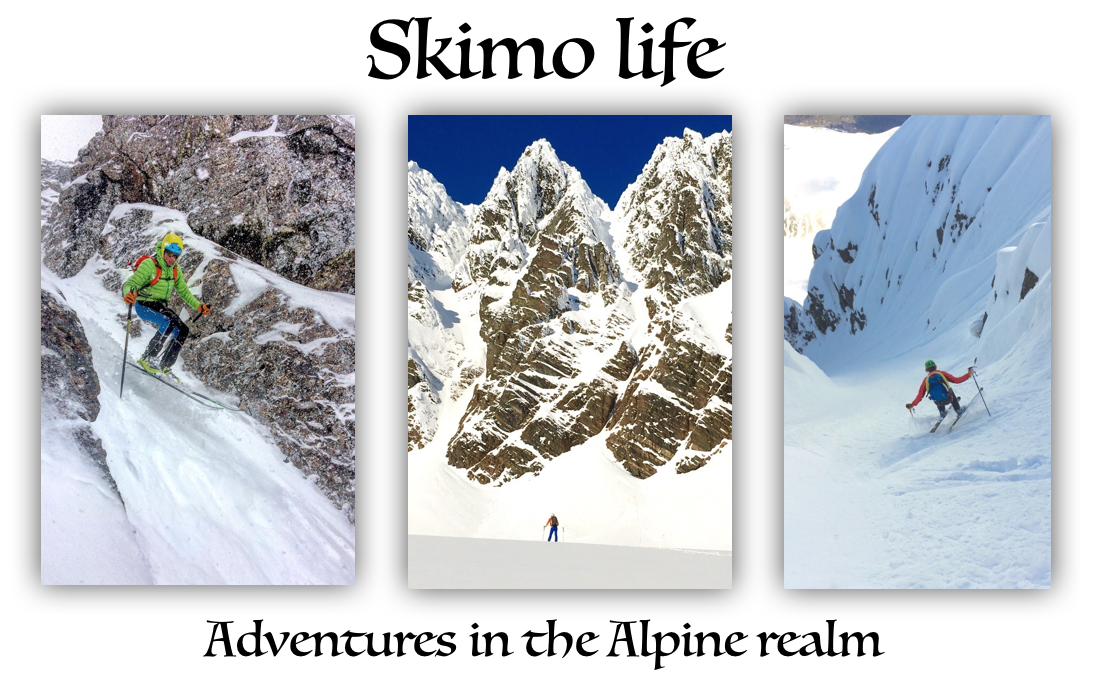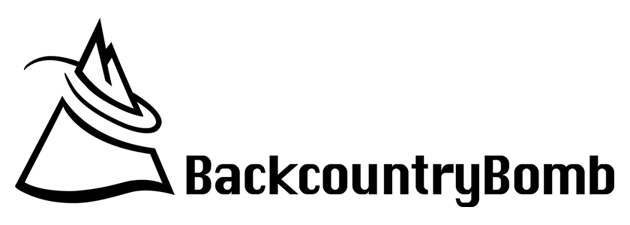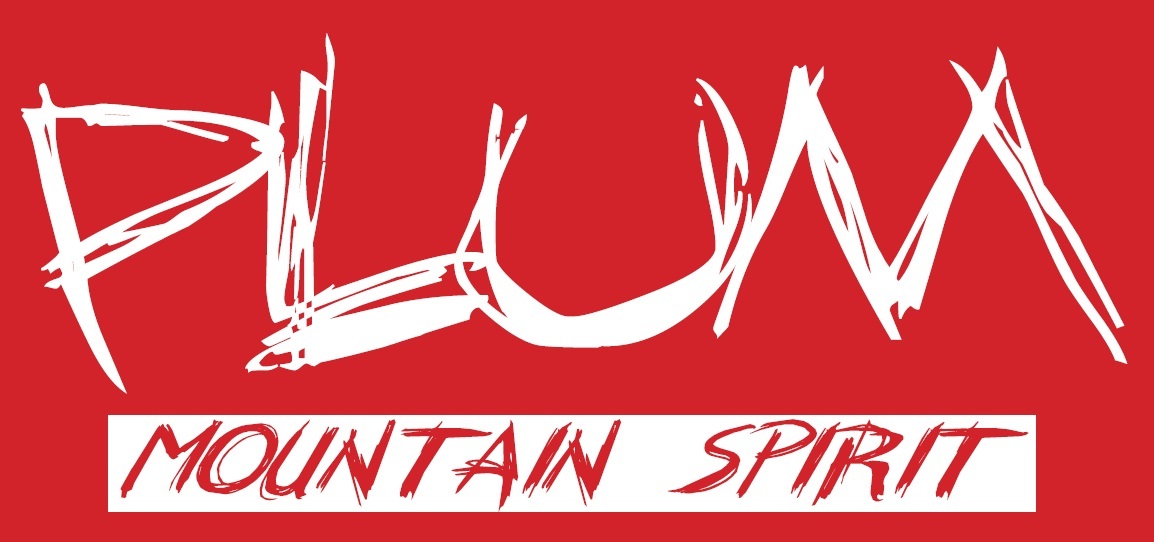The Essential Climbing Skin
 Monday, October 19, 2015 at 01:45AM
Monday, October 19, 2015 at 01:45AM Recently, a good friend of mine decided to finally upgrade his ski set up after many years on a pair of early carbon fiber Dynafit skis. He’s the kind of guy who can ski on anything and he just didn’t see the point of getting something new. But, I finally convinced him that there’s more fun waiting to be had with modern boards so he relented. I mean, who doesn’t want to have more fun?
During our discussions about all things related to new ski gear, the topic of skins came up. Now, long-time readers know that I have lots of opinions about skins and how to outfit your skis with this essential piece of ski mountaineering gear. He wanted all the beta. I figured that I’d just refer him to my blog for everything he needed to know. But after combing through various posts, I realized that I don’t have all the information in one place. That needs to be fixed. Plus, there've been little tweaks to my ideas recently that I should publish. So, here you go.
Plush
Much of what I present here has to do with what you do once you have skins – trimming, attaching, maintaining – but first you have to pick a skin. Clearly, with the growing popularity of backcountry skiing, there are dozens of options. Nylon versus mohair and intermediate combinations is the first consideration.  Fischer's entry into the "no-plush" zoneNow, there are some interesting options coming out that involve no plush, nylon or otherwise, but rather textured plastic that is supposed have good grip and better than average glide. Seeing as this is the first real year out, I’ll let the masses weigh in before this new stuff makes it onto these pages. But here’s a look if you’re curious.
Fischer's entry into the "no-plush" zoneNow, there are some interesting options coming out that involve no plush, nylon or otherwise, but rather textured plastic that is supposed have good grip and better than average glide. Seeing as this is the first real year out, I’ll let the masses weigh in before this new stuff makes it onto these pages. But here’s a look if you’re curious.
As for the more traditional choices, it boils down to this. Get nylon if you want superior climbability and durability while sacrificing suppleness, glide and weight. The ubiquitous Black Diamond Nylon skins are the industry standard. If you don’t mind a little back slip on icy or overly steep skin tracks and prefer superior glide and a compact package, mohair is for you. In the middle and where I spend most of my skin dollars is the mixed skin, a combination of mohair (70%) and nylon (30%). This beefs up the durability when skinning in bony terrain and the plush lasts more than a couple of seasons.
Race Ready
 Pomoca Race Pro Skin
Pomoca Race Pro Skin
If you’re racing then there's only one choice and that’s mohair. There's simply nothing lighter that climbs and glides quite like it. Pomoca and Coltex both make nice skins although my bias leans toward Pomoca since most of the World Cup guys are on them. The glue is better in a wider range of conditions, too. There's nothing fancy about configuration here since all race skis are similar dimensions. Most racers leave them straight. Race skins are either 60mm or 65mm underfoot. You’ll get more glide from the narrower ones but might struggle on steeper tracks like those found in North American races. Cutting them short just behind the heel or running them further back is a question of personal preference and racecourse conditions. Most racers carry a selection of both and switch out as the course and conditions demand.
Touring
 Dynafit SpeedskinDynafit, Black Diamond, Pomoca and CAMP all make a nice mixed skin and I use all of them except for the Pomoca. But I understand that the Pomoca is basically the same as the Dynafit. The backing of the CAMP and Dynafit skins is a little tougher than the BD Mixed skin. The glue of the Dynafit skin has been seriously upgraded the last few seasons and may reflect Pomoca’s involvement in the product. The CAMP skin glue is not as good, particularly in the cold but this can be improved with some Gold Label Skin Glue touch up.
Dynafit SpeedskinDynafit, Black Diamond, Pomoca and CAMP all make a nice mixed skin and I use all of them except for the Pomoca. But I understand that the Pomoca is basically the same as the Dynafit. The backing of the CAMP and Dynafit skins is a little tougher than the BD Mixed skin. The glue of the Dynafit skin has been seriously upgraded the last few seasons and may reflect Pomoca’s involvement in the product. The CAMP skin glue is not as good, particularly in the cold but this can be improved with some Gold Label Skin Glue touch up.  The BD Mixed skin, while not as durable IMO, is light, supple and boasts the best glue on the market.
The BD Mixed skin, while not as durable IMO, is light, supple and boasts the best glue on the market.
Sizing and Trimming
Skis have done nothing but increased in size and with that, so, too, have skins. Bulky climbing skins insidiously increase the weight of your set up. It can be a little daunting when you heft some of these carpets that go on really fat skis. This makes the above considerations even more critical.
Many of today’s skis have shapes that leave a lot of the running surface of the ski off the snow when climbing. This surface area does not need to be covered by skin. Keep this in mind when buying the right skin width and when trimming the skin to fit the ski. Also, if you take my recommendation to go sans tail hook attachment, you’ll eliminate a lot of skin heading to the tail.
The best way to decide where to cut and trim your skins is to place the ski on a bench, depress the center to the table (cambered skis) and see where the contact limit is fore and aft. Mark the ski for reference once you’re ready to cut the skin.
When the first fat skis came out, my late partner, Steve Romeo, did a nice tutorial on cutting long tapers on the mostly unnecessary front end of the skin. When I finally got my own fatties (DPS Wailer Pure 112) I did the same and am happy with the result. It cleaves a lot of weight and bulk from unnecessary carpet on the running surface. The only downside is that when you put the skins together for the descent, there's exposed glue that can get contaminated if you’re not careful. Pay attention.



 A quick glue refresh on the key portion of skin
A quick glue refresh on the key portion of skin
 Doing this a couple of times each season will keep you out of trouble
Doing this a couple of times each season will keep you out of trouble

I’m a big fan of running the skins just shy of wall to wall along the weight bearing running surface of the ski. I think having the metal edge exposed is critical on steep, icy traverses. This REI tutorial covers it nicely.
Alternatively, several companies make skin cutters that cut the skin offset from the edge two or three millimeters. I’ve used these with varying success. When they work, they’re brilliant but they go dull quickly and become unusable after a few cuts. The BD technique, while a bit more tedious, is full proof as you’re always cutting against the ski's metal edge.
Glue

Like you see above, for touching up and regluing climbing skins there really is only one choice right now - Black Diamond Gold Label. This stuff is coveted by American and Euro skiers alike. Its best quality is that it works in the cold. Failing skins in the cold is a real deal breaker in places like Colorado, Wyoming and Alaska. Don’t trust anything else. I typically recommend taking a layer of old glue off using the paper and iron method and then applying a thin layer of Gold Label over the top. Go thin and spread with a scraper of some sort. Keeping the glue soft with a hit from a heat gun makes the task smoother. Let the new glue cure for 48 hours before using the skins or sticking them together glue side to glue side.
 Really?? Clearly no more shits to give.For the multi-season neglected, alien-glue-glop-shit-from-hell covered skin that at least one of your partners sports at the trailhead, nothing but a complete strip down of all glue will satisfy me. I’ve done this with the paper and iron technique but it’s tedious and messy. Instead, I enlist a partner (you provide the beer), a metal scraper and a heat gun. While one person gives a careful blast to the offensive mess with the heat gun, the other cleanly peels the stuff off the skin with the scraper. Works like a charm. Let the goop cool a minute or two and most of it peels right off the scraper. With skins that have the no-stick strip down the center, you can either peel it off and reapply after cleaning or simply work on each side.
Really?? Clearly no more shits to give.For the multi-season neglected, alien-glue-glop-shit-from-hell covered skin that at least one of your partners sports at the trailhead, nothing but a complete strip down of all glue will satisfy me. I’ve done this with the paper and iron technique but it’s tedious and messy. Instead, I enlist a partner (you provide the beer), a metal scraper and a heat gun. While one person gives a careful blast to the offensive mess with the heat gun, the other cleanly peels the stuff off the skin with the scraper. Works like a charm. Let the goop cool a minute or two and most of it peels right off the scraper. With skins that have the no-stick strip down the center, you can either peel it off and reapply after cleaning or simply work on each side.
This leaves a fresh canvas to which I can apply a thin layer of Gold Label and I’m ready to rock. The owner of the skins no longer has to enlist three of his friends at each transition to get his skins apart. Bonus.
Attachment
The typical BC skier doesn’t make much of this aspect of skins. They use whatever attachment system the skin comes with. G3, BD and Dynafit all have their own systems. Dynafit is the only stock one I favor out of the box as it pulls from the tip first, just like any skimo race set up. The others require some yoga gymnastics to pull from the tail, something I’ve never been fond of. It’s just a bit awkward.
To Hook or Not to Hook
I’ll be brief. Tail hooks on your climbing skins are mostly stupid, bulky and unnecessary. They also add an annoying step to donning skins at transitions that I never really got used to. For years, they might as well not existed, as they were initially hard to find in this country. I think Coltex may have sold some version of them with stretchy rubber thingies that always seemed to dry rot and eventually break. But they were as hard to buy in the US as Dynafit bindings in the early days.
 The good old daysIn the late 80’s and early 90’s, the iconic Ascension Climbing Skins, predecessors of modern Black Diamond skins came on the market and they certainly didn’t sport tail hooks, initially. Somewhere along the line, the engineers at BD decided to create a market for hooks and suddenly everyone had them.
The good old daysIn the late 80’s and early 90’s, the iconic Ascension Climbing Skins, predecessors of modern Black Diamond skins came on the market and they certainly didn’t sport tail hooks, initially. Somewhere along the line, the engineers at BD decided to create a market for hooks and suddenly everyone had them.  The Black Diamond STS tail fix system. Rare to see anyone without them these days.And with them, the perpetuation of that strange yoga/gymnastic manuver required to rip the hide from the rear of the ski. Seems like there's always one in the group that fails this skill and ends up on his back sometime during the day. Hilarious. Those of us who didn’t drink the tail hook Kool Aid would sometimes feel insecure without them. Even though we never had a problem before, we were gripped with fear that our skins were going to suddenly eject from the bases of our skis without warning. We’d be left paralyzed on the skin track with our friends shaking their heads condescendingly.
The Black Diamond STS tail fix system. Rare to see anyone without them these days.And with them, the perpetuation of that strange yoga/gymnastic manuver required to rip the hide from the rear of the ski. Seems like there's always one in the group that fails this skill and ends up on his back sometime during the day. Hilarious. Those of us who didn’t drink the tail hook Kool Aid would sometimes feel insecure without them. Even though we never had a problem before, we were gripped with fear that our skins were going to suddenly eject from the bases of our skis without warning. We’d be left paralyzed on the skin track with our friends shaking their heads condescendingly.
I got sucked into this perversion a few years ago and started using hooks again. It was okay with the Dynafit ones as I was still ripping the skin from the tip. But a couple of times, the tail hook snagged and bent and I had another pull a rivet out through the skin. I also hated the two-step skin donning process, fixing the tail first and then flipping the ski over to stretch the tip on. I never got used to it.
Once the tailpieces started failing on me I used that as a sign that my tail hook trial was over. The blade came out and I gleefully lopped off the ends, cleaving some weight and bulk at the same time. A hookless tail depends partly on glue quality and partly on tail pressure to stay on. Be sure to pay attention to the point of contact of the rear of the ski when deciding where to cut your skins. This is especially tricky with modern, rockered skis. The actual effective contact area of the ski is surprisingly small compared to the overall length of the ski. Less skin equals less weight.
I know there are plenty of you out there shaking your heads, sure your skins will fall off if you do this. And if you’re a lazy fucker who can’t be bothered to touch up your skin glue a couple of times a season then you might be right. But decades of skinning in a variety of conditions have proven to me that those fears are ungrounded. If the weather is so bitterly cold that your glue is going to fail, no tail hook on the planet is going to prevent it from doing so. In all other conditions, well-maintained skin glue will hold just fine sans tail attachment of any sort.
For the Arctic conditions we face once in awhile, one trick I like is storing my skins in my jacket tail end against my chest. Throw a puffy on and ski down. The skin will warm up and any offending snow crystal assassins will be gone by the time you skin up again.
Ski Tip Mod
 Dynafit got it right from the start. Now, if you take my suggestion to go without tail hooks then you’ll likely need to commit to some sort of tip rip system. Before you can use skins with this feature you have to have skis that will accept it. Dynafit skis come with this feature in place but many others do not. If you’re committed then you’ll have to demonstrate it by modifying your skis. This is not for the weak hearted but is a satisfying process, nonetheless. I’ve drilled and notched at least a dozen pairs of skis now with no ill effects. No delams or other ski failures, despite what you may fear. The thing is, most modern ski lay ups are so saturated with resin that delamming from the tip is unlikely.
Dynafit got it right from the start. Now, if you take my suggestion to go without tail hooks then you’ll likely need to commit to some sort of tip rip system. Before you can use skins with this feature you have to have skis that will accept it. Dynafit skis come with this feature in place but many others do not. If you’re committed then you’ll have to demonstrate it by modifying your skis. This is not for the weak hearted but is a satisfying process, nonetheless. I’ve drilled and notched at least a dozen pairs of skis now with no ill effects. No delams or other ski failures, despite what you may fear. The thing is, most modern ski lay ups are so saturated with resin that delamming from the tip is unlikely.
I’ve detailed the technique a few times in these pages but below is a photographic series of the process. The more OCD you are, the nicer the final result. But even the most butchered effort will likely work. I typically drill a centered pilot hole 15 mm from the front edge to get things going. Then, I dilate up to ¼ inch. That’s big enough for the bungee. Next, I use a Dremel tool with a metal cutting wheel to cut the slot to the front edge. I shape this like a key hole, flaring slightly to make insertion easier. I use a counter sink on the hole to bevel the edge to make cutting through the bungee less likely. Careful sanding of the entire inside edge finishes it off. For a final refinement, some quick set epoxy can be used to seal the exposed edge.
Skis with tip holes for either rescue systems or skin attachment like those on K2 and some Sportiva skis are not problems for this process. There’s usually ample room for both.
Skin Tip Design
In the early days of skimo racing, sewing bungee attachments to your race skins was a right of passage. I loved it. Various techniques were used to keep the skin on the tip. Trab made the most popular race ski in those days and they sported a very wide tip slot that required something large to keep the bungee in place. Some vintage Trab Race Aero World Cups with the funny proprietary tips
With wide slots like the Trabs, these attachments work fineWashers, plastic widgets and even bottle caps were all used to equal effect. But with the above described tip slot, a simple knot in the cord will work.
The skin must be cut to facilitate sewing a loop through which the bungee passes. I like to make a template out of stiff paper, drawing half the taper I desire and then folding it over length-wise to create a symmetric opposite side. That keeps things pretty. Don’t’ go too narrow at the bungee tab or you’ll risk the cord ripping through the skin loop. I use about a 20mm wide tab of skin. I like to remove all the glue from the tab I’m going to fold over to make handling and sewing easier. For years I folded the tab glue to glue but recently came across plush to plush folding on www.simpleskimo.com and now favor that. I like having glue contact all the way to the tip of the skin and it might lessen snow accumulation under the skin.
I used to hand sew the tab and reinforce with Seam Grip. That works great. I then tried various types of rivets. But after I over drove a couple and they started cutting through the skin I decided it was too sketchy. I now like to have my local shoe cobbler sew it for me, using high-test thread and a burly machine. Bomb proof.
Copper rivet oversewn with heavy thread
Bungee cord diameter is an important consideration. The bigger the skin, the more robust the bungee needs to be. I can get away with 3.5mm bungee on race skins and use 4.5mm on the rest. I’ve used even bigger but I don’t think it’s necessary. A single knot tied close to the skin will keep the tip on the ski. Various bungee cord options, 3.5mm on the left, 5mm and then 4.5mm in blackLeave two to three inches of bungee to facilitate grabbing and pulling the skin at transitions. A nice little mod I’ve added to the loose ends is to wrap them together and then dipping them in Plastic Dip. This makes a clean, grippy finish to the set-up.
Now if all this bungee business seems just a tad low rent for you, there's another option that I did several years ago using Dynafit's rubber tip attachment. These can be found as an after market accessory at Skimo.co. Here's the link to the original post and a few picks below to give you the idea.


 Brian |
Brian |  22 Comments |
22 Comments |  Dynafit,
Dynafit,  Pomoca,
Pomoca,  climbing skins,
climbing skins,  ski touring,
ski touring,  skimo.com in
skimo.com in  Gear
Gear 





Reader Comments (22)
Hi,
Followed your step by step guide and it was a lot easier than I expected to cut out skin notches. Just did it on an old pair of MTN 88’s that I primarily use for steeper ski mountaineering adventures. It’s going to be great not having to remove the skis in steeper terrain. (and also when doing training laps) The modification took less than an hour in my kitchen (haven’t got a workshop) and I used a small metal saw and some small metal files instead of a Dremel.
Thanks for a great post!
Nice Henrik. I'm glad the beta did you right. It's a naughty feeling cutting into skis but the result is worth the stress.